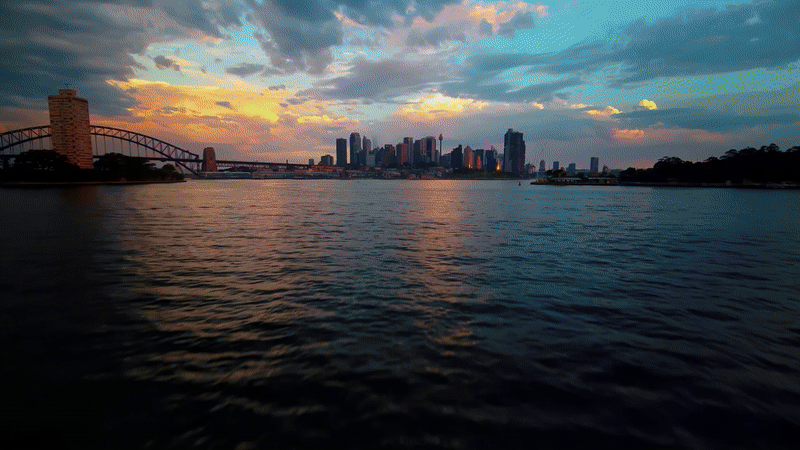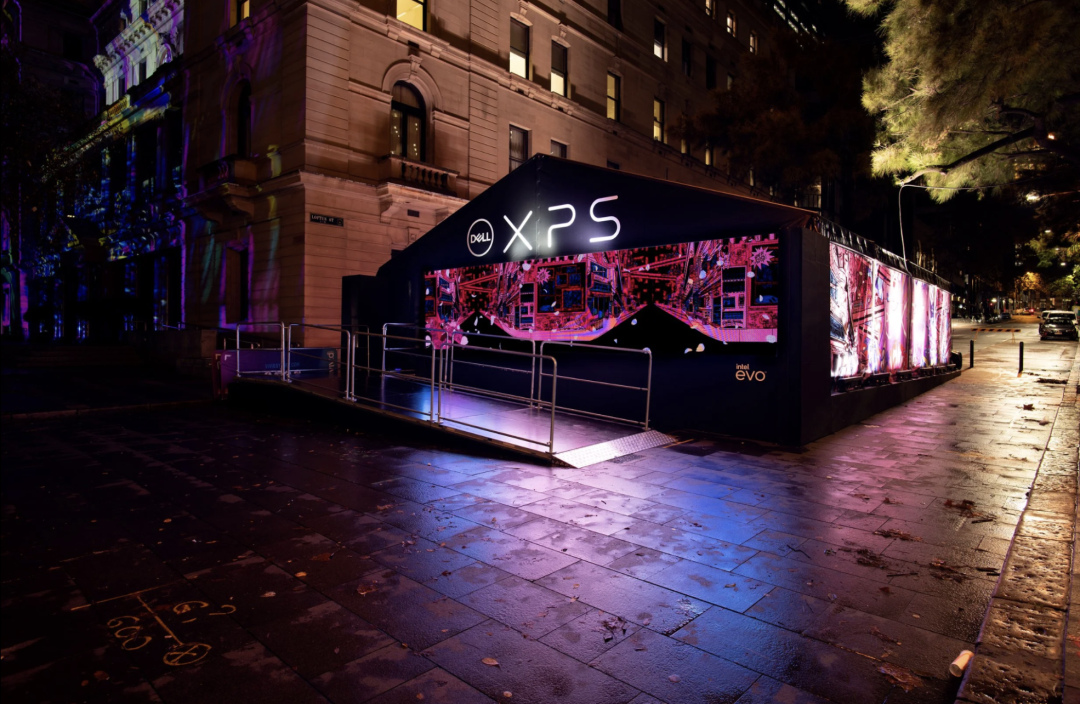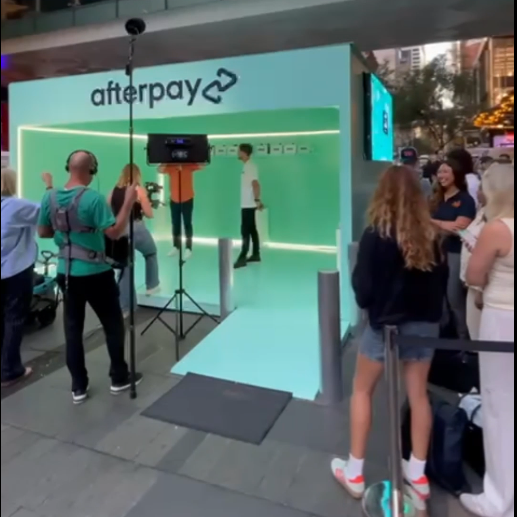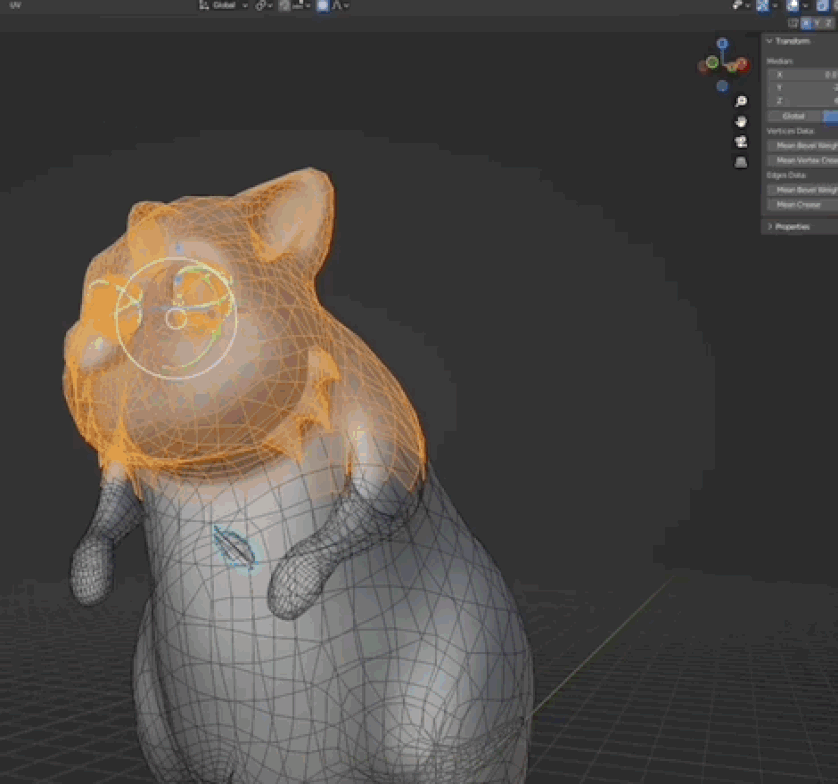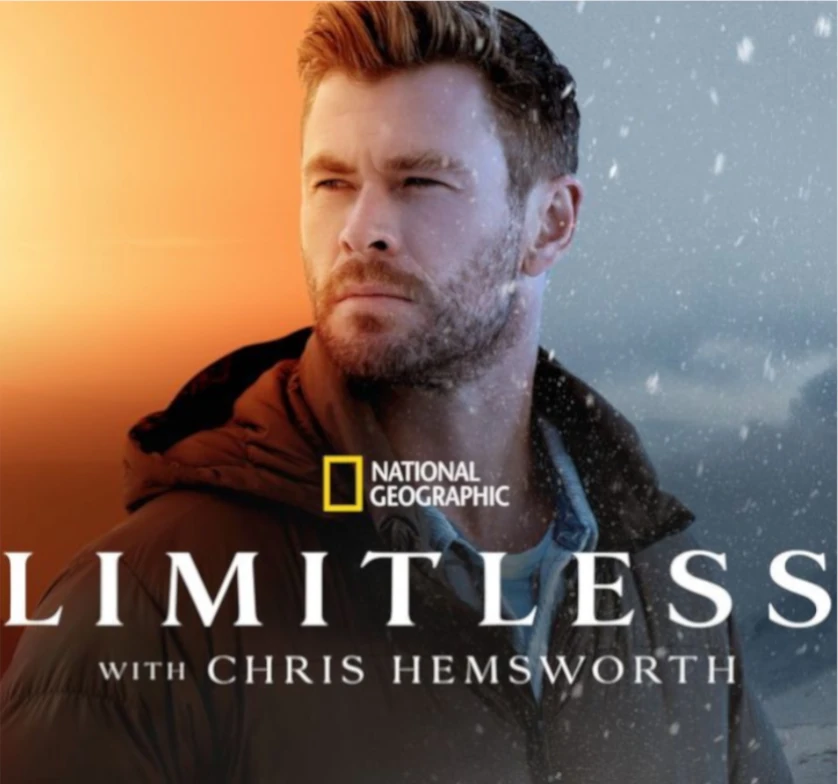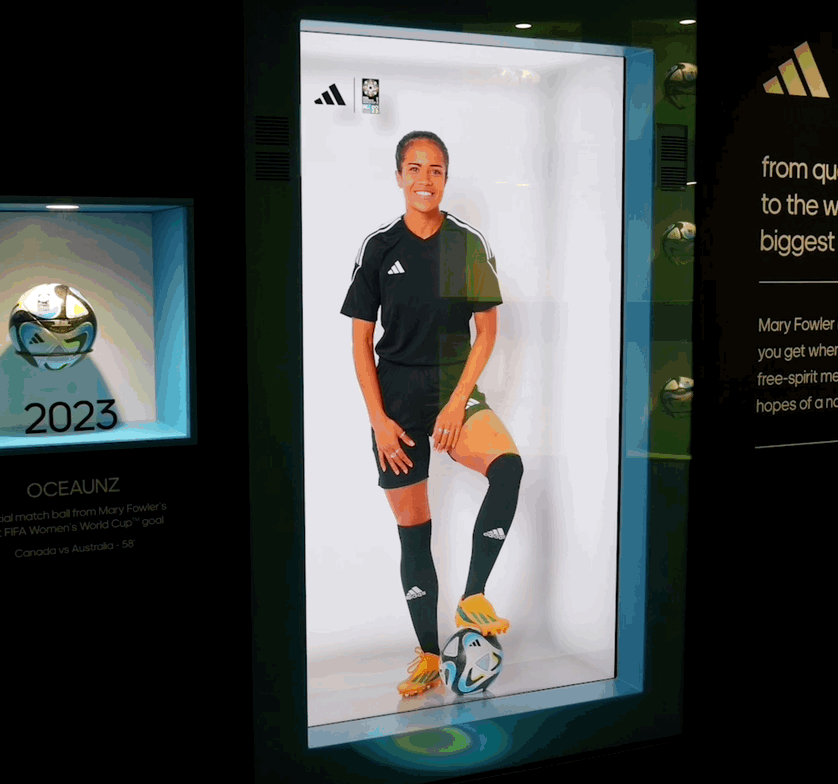Vivid Sydney: How Catalyst XR Brought Dell’s ‘Youniverse’ to Life Through Real-Time Animation and Augmented Reality Development
When TikTok and Dell set out to make a bold impact at Vivid Sydney 2022, the brands wanted to do more than design another installation. They wanted to create an experience that blended physical exploration with digital immersion – an experience that celebrated creativity, self-expression, and personal identity. They called it the Youniverse.
To bring this hybrid vision to life, they partnered with Catalyst VR to develop a real-time Augmented Reality lens that extended Dell’s physical Vivid activation into a shareable mobile experience. The AR effect needed to be visually striking, technically efficient, platform-friendly, and instantly understandable to thousands of festival-goers moving through the installation.
Visitors would journey through themed rooms – each representing a creative “path” – and at the end of their physical experience, they were invited to take the Youniverse with them by trying the custom TikTok AR effect built by Catalyst. Accessible through onsite QR codes, the lens became a digital counterpart to the physical installation, allowing guests to step inside an animated world of their choosing.
This is the story of how Catalyst designed, animated, and engineered the AR experience that powered Dell’s presence at Vivid – combining 3D animation, real-time optimisation, intuitive UX design, and seamless mobile performance.
Designing a Digital Continuation of a Physical Journey
The Dell Youniverse installation at Vivid was a multi-room immersive environment where visitors were invited to choose between two themed creative worlds:
- Manga Cityscape
- Digital Fashion
Each room showcased bold visuals, vibrant colours, and thematic styling that represented the creative worlds behind Dell’s XPS campaign. The TikTok lens that Catalyst developed needed to feel like a natural extension of those environments – something that continued the experience rather than replacing it.
Visitors explored the physical space, selected their creative “path,” and were then encouraged to scan a QR code to activate the AR experience. The lens had to work instantly, perform reliably across a wide range of mobile devices, and deliver a moment that felt personal, playful, and true to the Youniverse aesthetic.
This required more than just technical execution; it required thoughtful collaboration between TikTok, Dell, and Catalyst to ensure the digital world matched the physical one in tone, energy, and creative direction.

Turning Static Artwork Into Living Animated Worlds
Dell and TikTok provided Catalyst with two static artwork pieces – one representing Manga Cityscape and one representing Digital Fashion. Catalyst’s challenge was to transform these flattened, 2D assets into dynamic, looping animated backgrounds designed specifically for mobile AR.
But these animations needed to achieve high visual impact while fitting within strict performance and file-size constraints. To ensure instant loading and smooth playback, loops had to remain short- just 1 to 2 seconds.
Catalyst’s animation approach
To bring these scenes to life, Catalyst used a cinemagraph-inspired pipeline:
1. Artwork layering and depth creation
Each artwork was dissected into multiple layers – foreground, midground, background – allowing for subtle motion and depth that would feel dimensional inside the AR experience.
2. Micro-animation design
Because the loops had to be extremely short, Catalyst focused on animation elements that delivered maximum impact with minimal data footprint. These included:
- Neon flickers
- Particle drift
- Shimmering signs
- Cloud movement
- Light sweeps
Each movement was designed to be smooth, seamless, and loop perfectly.
3. Texture optimisation
The animation team optimised texture maps to maintain clarity while supporting fast, platform-friendly performance.
4. Seamless loop engineering
To avoid jumps, stutters, or restart artifacts, Catalyst engineered each animation to loop invisibly.
The result: two atmospheric worlds that felt alive, animated, and ready for users to step into – without exceeding TikTok’s technical limitations
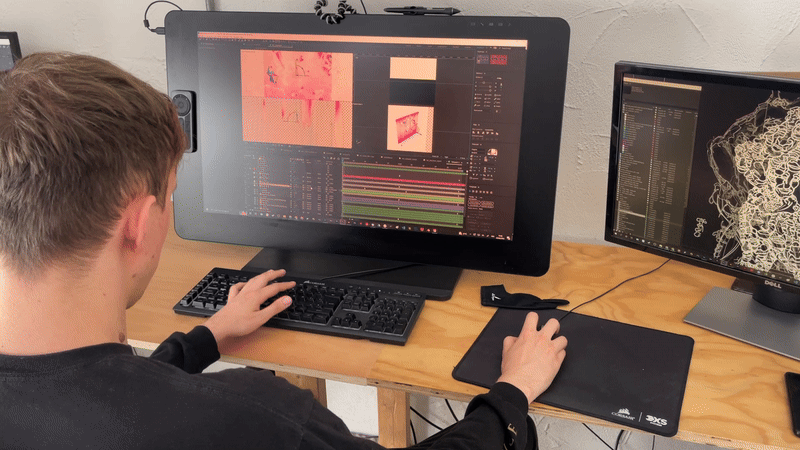
Interaction Design: A Playful, Gesture-Based Experience
Rather than relying on taps or menus, the AR lens invited users to choose between Manga Cityscape and Digital Fashion using a simple, intuitive gesture: a tilt of the head.
Short, clear title cards appeared beside the user’s face, prompting them to tilt left or right. When they did, the system detected the movement, selected the corresponding theme, and loaded the animated background behind them.
This interaction method perfectly suited the playful energy of TikTok. It was visual, fun, and felt more like a game than a UI input.
How Catalyst built it
Catalyst engineered a responsive head-tilt mechanic by:
- Reading gyroscope and accelerometer signals
- Setting thresholds for left and right tilt
- Fine-tuning sensitivity to prevent accidental switching
- Creating a delay buffer for smoother transitions
- Ensuring the gesture worked across a wide device range
Testing showed that festival-goers immediately understood the interaction, making it a perfect fit for a busy public environment.
Segmentation & Real-Time Compositing
The AR lens used TikTok’s segmentation technology to place users directly in front of the animated backgrounds. This meant the lens needed to handle:
Edge detection
- Lighting consistency
- Colour balance
- Stability across camera conditions
- Performance under varied device specs
Catalyst optimized the effect so that users blended naturally into the animated scenes – without introducing jitter, haloing, or noise around the edges.
For thousands of people capturing selfies on-site, the segmentation needed to just work, regardless of light conditions, device model, or user movement.
Performance Engineering: Built for TikTok, Built for Scale
AR effects live or die by how they perform on real devices. They must:
- Load instantly
- Maintain frame rate
- Run efficiently on mid-range hardware
- Deliver consistent segmentation
- Avoid battery strain or overheating
Catalyst tested the experience across a broad range of devices, including:
- iPhone X
- Samsung Galaxy S10
- iPad 2021
- Galaxy Tab S7
- Chrome and Safari desktop browsers
This ensured the effect was ready for the diverse audience at Vivid – locals, travellers, younger users, older users, and everyone in between.
A Seamless Blend of Creativity, Technology & User Experience
The Dell Youniverse lens succeeded because it was more than an AR filter – it was a narrative continuation of the physical installation.
- Visitors explored themed rooms.
- They discovered their creative identity.
- And then, through the AR lens, they stepped inside that world.
Catalyst’s work bridged all three touchpoints:
1. Physical Exploration
Immersive rooms are designed around two themes.
2. Digital Transformation
Users selected their world with a physical gesture.
3. Shareable Identity
The AR lens allowed them to visually express the world they chose.
This combination of physical, digital, and social elements created a cohesive journey – from environment to interaction to personal expression.
How the Project Demonstrates Catalyst’s Strength in AR & Animation
The Youniverse activation demanded technical finesse, creativity, and tight collaboration between stakeholders. Catalyst’s role required:
Expert AR Development
- Mobile-optimised 3D animation
- Gesture-based interaction design
- High-performance mobile engineering
- Cross-stakeholder project alignment
These strengths reflect Catalyst’s identity as a leading XR production studio with:
- Over 300 AR/VR/MR projects delivered
- Work across 8 countries
- Over 2 million AR users
- Partnerships with TikTok, Meta, Disney, Atlassian and more
The Youniverse AR lens fits directly into Catalyst’s legacy of building immersive experiences for major events, global brands, and large-scale public audiences.
Building AR for Events: Why It Matters
Augmented Reality has become one of the most powerful tools for live event engagement. For brands participating in major festivals like Vivid, AR can:
- Extend the experience beyond the event
- Encourage user-generated content
- Connect physical activations with digital audiences
- Enable personalisation
- Increase social reach exponentially
For Dell, the TikTok lens amplified the installation’s visibility – not just among Vivid attendees, but across the platform’s global audience.
And for visitors, AR turned a moment inside a physical room into a personal digital expression they could save, share, and revisit.
The Future: Where Catalyst Is Taking AR Next
Catalyst’s mission is to continue expanding what’s possible in the world of immersive technology. The Dell Youniverse project is a snapshot of where AR is heading – toward experiences that are:
- More expressive
- More personal
- More interactive
- More seamlessly integrated with real-world events
Catalyst is already exploring new directions in:
- Web-based AR
- Real-time 3D TikTok effects
- Mixed Reality for devices like Apple Vision Pro
- Generative animation pipelines
- Spatial AR storytelling
- Large-scale site-specific AR installations
The future of AR isn’t about novelty.
It’s about experiences that blend digital and physical worlds effortlessly—just like the Youniverse.
Conclusion: Stepping Into the Youniverse
What started as two pieces of static artwork became fully realised, animated AR environments that thousands of people stepped into at Vivid Sydney.
Catalyst XR brought the Youniverse to life through:
- Clever animation design
- Real-time AR performance optimisation
- Simple, intuitive interaction design
- Flawless segmentation and compositing
- Collaboration with TikTok and Dell
The experience didn’t just extend the installation.
It made the Youniverse something visitors could capture, share, and keep – long after they left the festival.
And that’s the power of immersive technology:
It turns moments into memories.
And memories into stories worth sharing.

